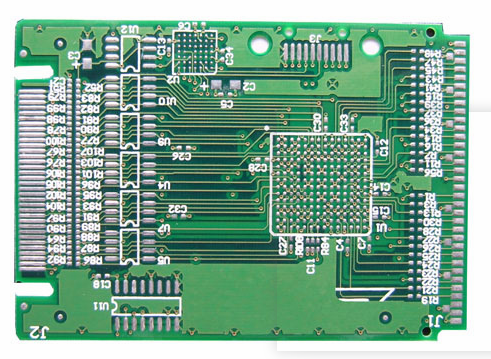In the research of PCB reverse technology, the reverse deduction schematic refers to the reversal of the PCB document diagram or the direct drawing of the PCB circuit diagram according to the physical object of the product, which aims to explain the principle and the working state of the circuit board. In addition, the circuit diagram is also used to analyze the functional characteristics of the product itself. In the forward design, the general product development must first carry out the schematic design, and then carry out the PCB design according to the schematic.
Whether it is used to analyze circuit board principles and product operating characteristics in reverse research, or as the basis and foundation of PCB design in forward design, PCB schematics have a special role. So, how to reverse the PCB schematic diagram according to the document diagram or the real thing, and what details should be paid attention to in the reverse process?
1. Reasonably divide functional areas
When the schematic diagram of the PCB board is reversely designed, the reasonable division of functional areas can help engineers reduce unnecessary troubles and improve the efficiency of drawing. Generally speaking, the components with the same function on the PCB will be arranged in a concentrated manner, and the functional division area can have a convenient and accurate basis when the schematic is reversed. However, the division of this functional area is not arbitrary. It re
quires engineers to have a certain understanding of electronic circuit related knowledge. First, find out the core components in the functional unit, and then find out other components of the same functional unit based on the trace connection to form functional partitions. The formation of functional zones is the basis of the diagram. In addition, during this process, don't forget to use the component serial numbers on the board, they can help you partition functions more quickly.
2. Find the benchmark

This reference piece can also be said to be the main part of the PCB copy board at the beginning of the schematic drawing. After determining the reference components, drawing based on the pins of these reference components can ensure the accuracy of the schematic diagram to a greater extent. For engineers, the determination of the reference part is not a very complicated issue. Usually, you can choose the component that plays a major role in the circuit as the reference component. They are usually bulky and have many pins, which facilitate stretching. Such as integrated circuits, transformers, transistors, etc., can be used as a suitable reference.
3. Correctly distinguish lines and draw lines reasonably
In order to distinguish ground wire, power wire and signal wire, engineers also need to master relevant power supply knowledge, circuit connection knowledge, PCB wiring knowledge and so on. The difference between these lines can be analyzed from the connection of the components, the width of the copper foil of the circuit, and the characteristics of the electronic product itself. In the wiring diagram, in order to avoid line crossing and spreading, the grounding wire can be used in a large number of grounding symbols. Various lines can be clearly distinguished by using different lines of different colors, and special symbols can be used for various components, and even unit circuits can be drawn separately and finally combined.
4. Master the basic framework and learn from similar schematic diagrams
For some basic electronic circuit frameworks and principle drawing methods, engineers need to master, not only to directly draw some simple and classic unit circuits, but also to form the overall framework of electronic circuits. On the other hand, don't ignore that similar electronic products have a certain similarity in the schematic diagram of the PCB copy board. Engineers can make full use of similar circuit diagrams and perform the reverse of the new product schematic diagram based on experience accumulation.
5. Check and optimize
After completing the schematic, you must pass tests and check the links to complete the reverse design of the PCB schematic. Need to check and optimize the nominal value of components sensitive to PCB distribution parameters. According to the PCB file diagram, compare and analyze the schematic diagram to ensure that the schematic diagram and the file diagram are completely consistent. If the layout of the schematic diagram is found not to meet the requirements during the inspection, the schematic diagram will be adjusted until it is completely reasonable, standardized, accurate and clear.